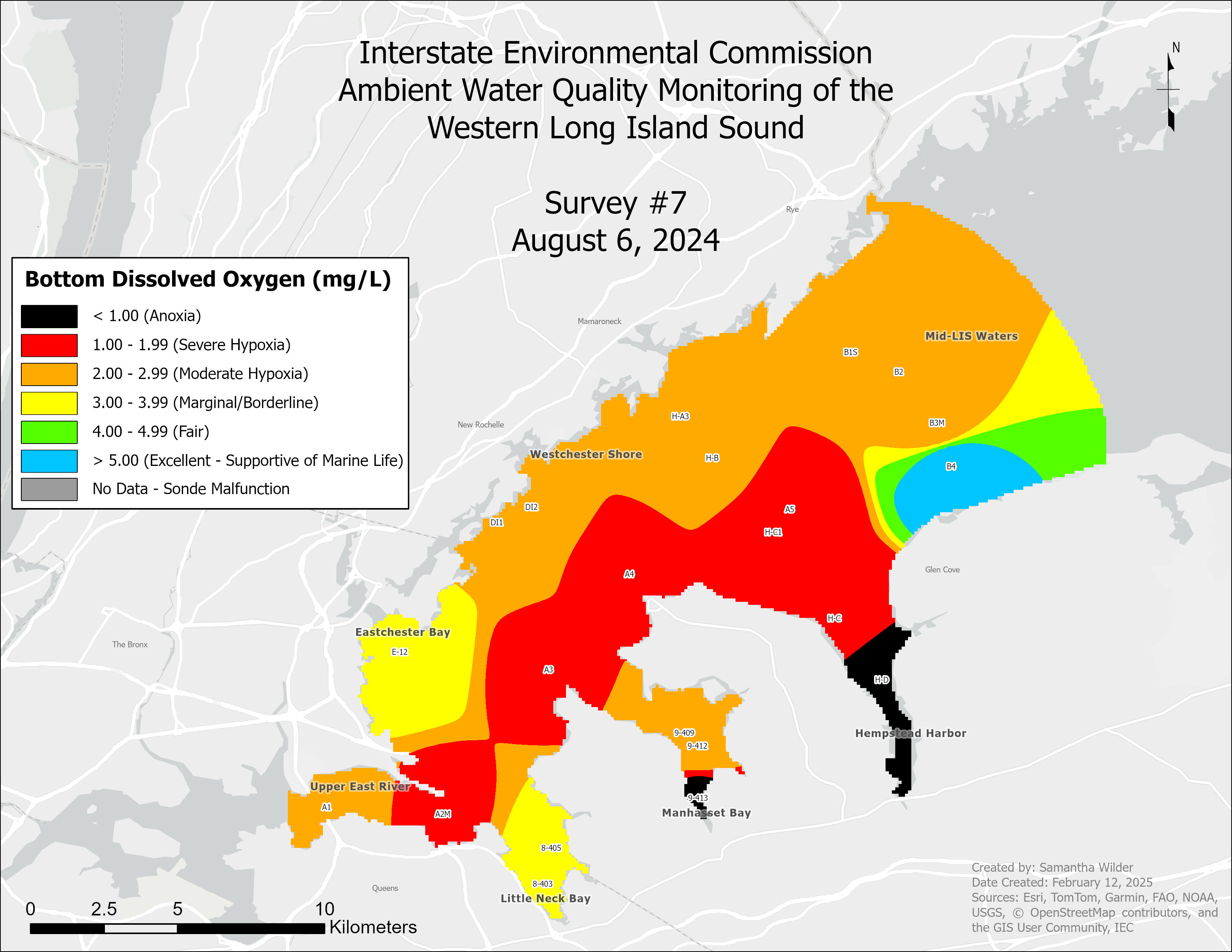
Western Long Island Sound Hypoxia in Summer 2024- Time-Lapse Videos

Check out these summer 2024 time-lapse videos depicting dissolved oxygen levels in the western Long Island Sound! These visualizations were developed using surface (1 meter depth) and bottom (1 meter above sediment) dissolved oxygen measurements taken by IEC during our weekly water quality surveys in summer 2024. Low or depleted dissolved oxygen levels in a waterbody is referred to as hypoxia. Hypoxia can result in significant adverse effects on marine life and habitats, which need sufficient dissolved oxygen (>5.00mg/L) to survive and thrive. Hypoxia is most prevalent in the summer months, as dissolved oxygen is inversely proportional to temperature. In the Long Island Sound, hypoxia is an annual issue in the summer months, particularly in the bottom waters and embayments. This is largely due to the high nutrient concentrations- mainly nitrogen- from wastewater treatment facilities, septic systems, and stormwater and fertilizer runoff which are discharged into the Sound. High nutrient concentrations reduce dissolved oxygen levels by stimulating algal blooms, which subsequently decay, consuming oxygen in the process.
IEC monitors dissolved oxygen, as well as key water quality parameters impacted by and related to dissolved oxygen, at 22 stations weekly during the summer (June-September) and monthly during the remainder of the year (October-May). These weekly surveys provide data into how dissolved oxygen levels change in the Long Island Sound waterbody throughout the summer. Discrete (individual) dissolved oxygen measurements were interpolated using GIS to estimate dissolved oxygen in areas surrounding the discrete measurements. Dissolved oxygen maps from each weekly survey were then collated into time-lapse videos, as shown here. Weekly summaries of IEC’s 2024 monitoring efforts are available here.
Surface Dissolved Oxygen (mg/L):
Bottom Dissolved Oxygen (mg/L):
- Log in to post comments